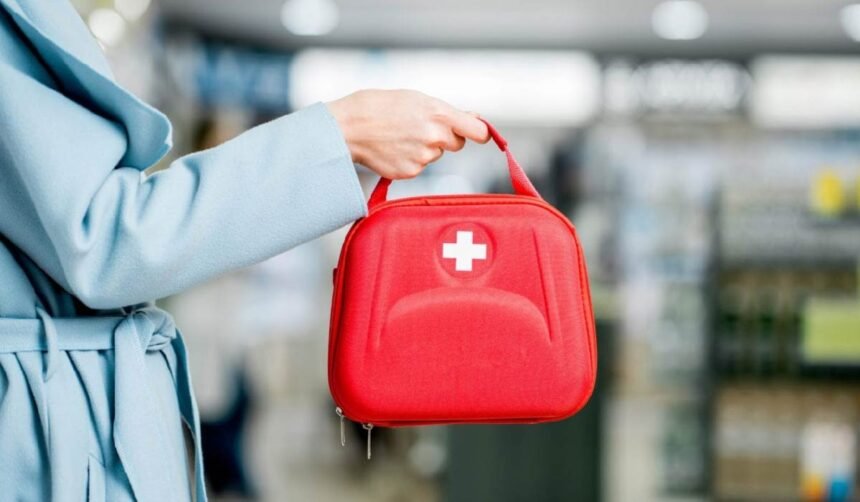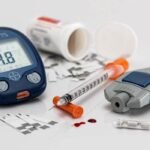Emergencies can occur at any time, and being prepared can make the difference between life and death. Cardiopulmonary Resuscitation (CPR) is a life-saving technique used during cardiac arrest or respiratory failure to maintain circulation and breathing. However, performing effective CPR requires not just skill but also the right tools. A CPR kit is an essential resource designed to aid rescuers in providing proper care during a medical emergency.
A CPR kit contains various tools that assist in delivering chest compressions, providing rescue breaths, and ensuring overall hygiene and safety during the procedure. Whether in a hospital, workplace, school, or public setting, having a CPR kit readily available can significantly increase the chances of survival for individuals in distress. This blog explores what a CPR kit is, its essential components, why it is vital, and how to use it effectively.
What is a CPR Kit?
A CPR kit is a collection of medical supplies specifically designed to facilitate effective and hygienic cardiopulmonary resuscitation. These kits can be compact and portable, making them easy to store in homes, vehicles, workplaces, and public areas. They are used by both trained professionals and bystanders who need to administer life-saving measures before emergency responders arrive.
The contents of a CPR kit vary depending on the brand, purpose, and intended use. However, all CPR kits contain fundamental tools that aid in performing CPR safely and effectively.
Essential Components of a CPR Kit
A well-equipped CPR kit typically includes the following essential items:
- CPR Face Shield or Mask: A protective barrier used to prevent direct contact between the rescuer and the victim, reducing the risk of disease transmission.
- Gloves: Disposable gloves protect the rescuer from bodily fluids and maintain hygiene during the procedure.
- Alcohol Wipes: Used to sanitize hands or equipment before administering aid.
- Pocket Resuscitator (CPR Pocket Mask): A device with a one-way valve that allows for more effective ventilation while preventing contamination.
- AED Pads and Scissors: Some CPR kits include automated external defibrillator (AED) pads and scissors to assist in using an AED if necessary.
- Instructional Guide or CPR Card: Many kits come with a quick reference guide to remind users of the correct steps for performing CPR.
- Medical Shears: These are used to cut clothing quickly to access the chest area for compressions or AED pad placement.
- First Aid Supplies: Some kits also include bandages, gauze, and antiseptics to handle minor injuries alongside CPR efforts.
Why is a CPR Kit Vital?
A CPR kit plays a crucial role in emergency situations where immediate action is necessary to sustain life. Below are key reasons why having a CPR kit is essential: UMock Qbank helps students master it through case-based questions and up-to-date guidelines, making it a valuable tool for academic and clinical success.
Increases the Chances of Survival
During cardiac arrest, every second counts. CPR helps maintain blood circulation and oxygen supply to vital organs, but the right equipment can enhance its effectiveness. A CPR kit ensures that rescuers have the necessary tools to perform CPR efficiently and with minimal hesitation.
Reduces the Risk of Infection
One of the primary concerns when administering CPR is the risk of disease transmission. A CPR face shield or mask included in the kit acts as a protective barrier, preventing direct contact with bodily fluids. Additionally, gloves and sanitizing wipes further protect both the rescuer and the victim from infections.
Enhances Confidence in Performing CPR
Many people hesitate to perform CPR due to a lack of training or fear of doing it incorrectly. A CPR kit often includes a simple instruction guide or reference card to provide guidance during a high-stress situation. Having the right tools available also instills confidence in the rescuer, enabling quicker and more effective responses.
Supports AED Use
In many cases, a CPR kit is paired with an Automated External Defibrillator (AED). AEDs are critical for restoring normal heart rhythm in cardiac arrest victims. A well-stocked CPR kit with AED pads and scissors can streamline the process, making it easier to apply the AED and deliver necessary shocks without delays.
Suitable for Various Environments
CPR kits are not just for healthcare settings. They are equally important in:
- Homes: For family emergencies, especially for individuals with known heart conditions.
- Schools and Workplaces: Ensuring preparedness in case of sudden cardiac arrest (SCA) incidents among employees or students.
- Public Places: Airports, malls, and sports venues are high-traffic areas where medical emergencies can occur.
- Vehicles: Keeping a CPR kit in a car ensures emergency preparedness during travel.
How to Use a CPR Kit Effectively
Knowing how to properly use a CPR kit is crucial for maximizing its effectiveness during an emergency. Below are step-by-step guidelines for utilizing the kit:
- Assess the Situation
- Check if the victim is responsive by tapping their shoulder and asking if they are okay.
- Look for normal breathing. If the person is not breathing or only gasping, CPR is necessary.
- Call for Emergency Assistance
- Dial emergency services (911 or the appropriate local number) to report the incident and request professional medical help.
- Use Protective Gear
- Put on disposable gloves to maintain hygiene and prevent infection.
- Open the CPR mask or face shield and place it over the victim’s mouth.
- Begin Chest Compressions
- Position the victim on a flat, firm surface.
- Kneel beside the person and place your hands in the center of their chest.
- Perform compressions at a depth of at least two inches, at a rate of 100-120 compressions per minute.
- Provide Rescue Breaths (If Trained and Comfortable)
- Use the CPR mask to administer two rescue breaths after every 30 compressions.
- Ensure the victim’s airway is open by tilting their head back and lifting the chin.
- Use an AED (If Available)
- If an AED is present, follow the device’s voice instructions.
- Attach the pads to the victim’s chest and allow the AED to analyze their heart rhythm.
- Deliver a shock if advised, then resume CPR immediately.
- Continue CPR Until Help Arrives
- Keep performing cycles of 30 compressions and two breaths until emergency responders take over or the victim shows signs of life.
Choosing the Right CPR Kit
When selecting a CPR kit, consider the following factors:
- Intended Use: Determine if the kit is for personal, workplace, or public use.
- Portability: Compact and lightweight kits are ideal for travel and daily carrying.
- Contents: Ensure it includes essential items like a CPR mask, gloves, and a CPR instruction guide.
- Quality and Certification: Choose a kit from reputable suppliers that comply with medical safety standards.
Conclusion
A CPR kit is an indispensable tool that enhances the effectiveness of life-saving procedures during cardiac and respiratory emergencies. By providing essential protective gear and guidance, these kits empower both trained professionals and bystanders to take quick, decisive action in critical situations.
Having a CPR kit readily available in homes, workplaces, schools, and public areas ensures that individuals can respond promptly and safely to medical emergencies. Investing in a high-quality CPR kit and understanding how to use it effectively can ultimately save lives and improve emergency preparedness for communities worldwide.








